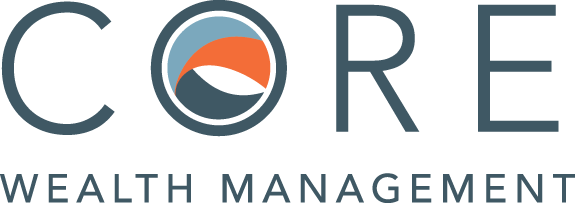
Baby boomers, the generation born between 1946 and 1964, are currently between the ages of 60-78. Most are retired or contemplating retirement. There are several planning considerations for baby boomers to be cognizant of in terms of cash flow and tax planning, both prior to and throughout the retirement years.
Retirement Plan Contributions – Baby Boomers can contribute up to $8,000 to IRAs and $30,500 to 401ks/403bs in 2024.
For those who are still working, it is never too late to contribute to company retirement plans and/or IRAs. Funds that are deposited into retirement accounts receive favorable tax treatment. Often, a worker can determine if he/she makes these contributions on a tax-deferred basis (meaning that the contribution amount reduces taxable income dollar for dollar in the current year; taxes will be paid when the funds are distributed from the account) or on a ROTH basis (tax is paid on the contribution amount in the current year, but no taxes are due on earnings or growth upon withdrawal from the account).
In 2024, the standard maximum contribution amounts are $7,000 to IRAs (subject to income limits) and $23,000 to 401ks/403bs. However, those who are 50 or older are eligible for “catch-up contributions,” which for 2024 are $1,000 for IRAs and $7,500 for 401ks/403bs. These contributions are in addition to any contributions made by an employer on an employee’s behalf. Similar catch-up contributions are available for contributions to Health Savings Accounts and SIMPLE IRAs.
Retirement Plan Withdrawals
For retirees, it is likely that investment accounts will need to be drawn upon to supplement income sources to meet cash needs. In efforts to minimize your tax liability over your retirement years, it is recommended that a distribution plan be established that incorporates tax planning. While funds in retirement accounts can be accessed any time after age 59 ½, withdrawals from retirement accounts are required once the account holder reaches the Required Minimum Distribution “RMD” starting age. As of 2023, the starting age is 73, and in 2033, the age will increase to 75. Depending on the size of the retirement accounts, minimum distribution requirements could push a taxpayer into a higher bracket for most of their retirement years. In anticipation of this possibility, a retiree could opportunistically choose to take IRA withdrawals, using the funds to meet their cash flow needs or to do ROTH conversions, in efforts to reduce the IRA balance that will be subject to minimum distribution requirements later in retirement.
Understanding the Taxability of Social Security Benefits
The amount of social security that is taxable is based upon overall income levels. The maximum amount of social security that is subject to taxation is 85%. If one begins to collect benefits while still working or when IRA withdrawals are being taken, more of the benefit amount will be subject to tax, and it is likely that it will be taxed at a higher rate when all income sources are considered.
Understanding How Medicare Premiums are Determined
Premiums for individuals utilizing the federal health insurance program Medicare, which the majority of Baby Boomers qualify for at age 65, are based on Modified Adjusted Gross Income from two years prior. For example, 2025 Medicare Part B and Part D premiums will be based on Modified Adjusted Gross Income for 2023. Therefore, to the extent income levels can be managed beginning in the year one turns 63, it may prove to be beneficial when it comes to calculating the costs of health insurance coverage once one turns 65. Qualifying life events (i.e. retirement), offer an opportunity to request an adjustment to premium levels.
As you establish a withdrawal strategy for your retirement accounts and a collection strategy for social security benefits, the impact that these income sources will have on your Medicare premiums needs to be considered in addition to the income tax impact that they will have.
Understanding Withdrawal Requirements and the Associated Tax Implications Associated with Inherited Retirement Accounts from a Non-Spouse
Perhaps you have inherited a retirement account from your parents, uncle or aunt, or even a sibling. Depending upon the date that they passed and the age at which they passed, there are different rules regarding when you need to remove funds from the account without incurring a penalty. That penalty can amount to 25% (until recently it was 50%!) of the value that should have been withdrawn. It is critical to understand the requirements and incorporate the incremental income into overall tax planning, keeping in mind that retirement account withdrawals are considered ordinary income.
Estimated Tax Payments
The IRS likes to collect taxes throughout the year as income is earned; they do not want to collect a lump sum when a tax return is filed. Therefore, the IRS imposes penalties on taxpayers who do not pay enough to the IRS throughout the year. In order to avoid this underpayment penalty, it is often suggested that taxpayers pay enough to safe-harbor themselves; depending on income levels, that amount equates to either 100% or 110% of the prior year tax liability or 90% of the current year liability. Payments to the IRS can be made through income tax withholding or estimated payments or a combination of both. Most taxpayers who are working withhold taxes from their wages to satisfy this “safe-harbor” rule. However, upon retirement, there are no wages to withhold on, so it is important that taxpayers either make estimated tax payments to the IRS or withhold from other income sources (i.e. social security, pensions, annuities, IRA distributions).
Whether you are a baby boomer that is in your peak earning years, or you are already retired, it is imperative that tax planning be incorporated into your financial plan. As almost every financial decision has tax implications, a well thought out, flexible cash flow plan coupled with the guidance of a fiduciary financial advisor will increase the likelihood that your wealth will be optimized over your retirement years.
